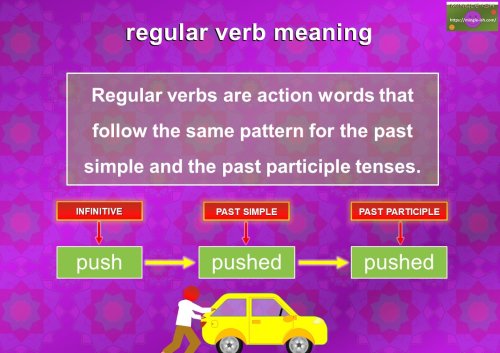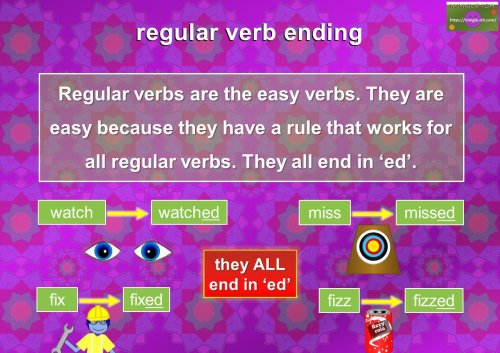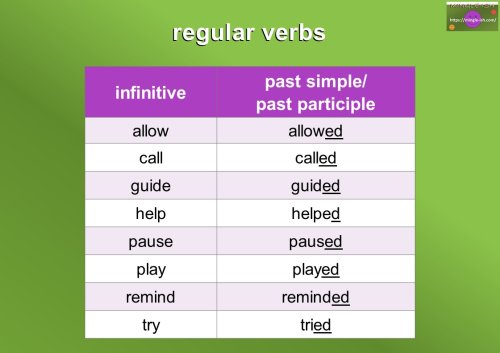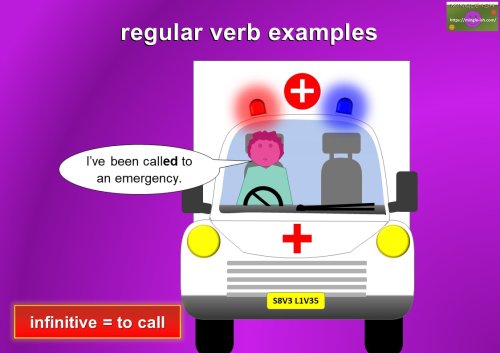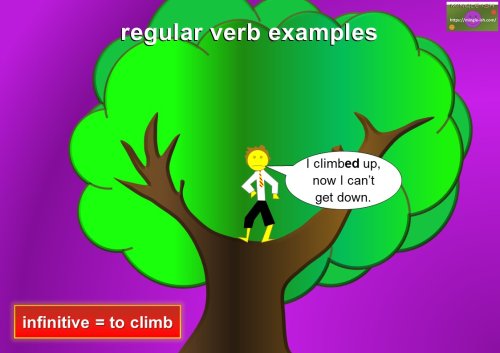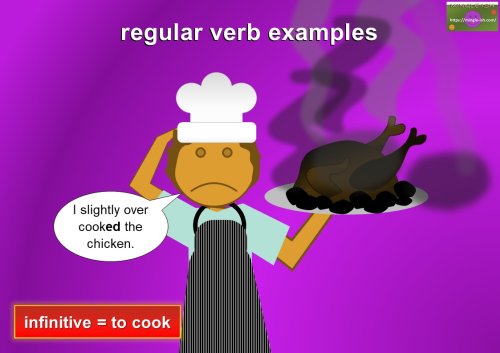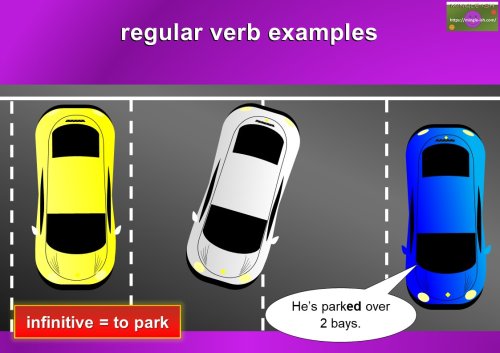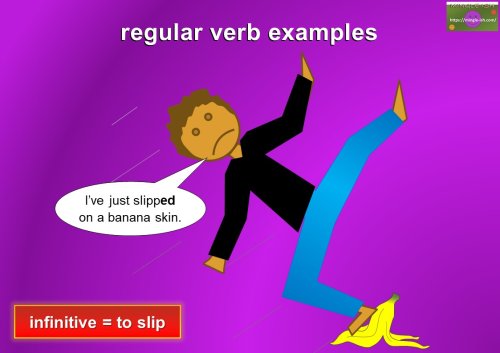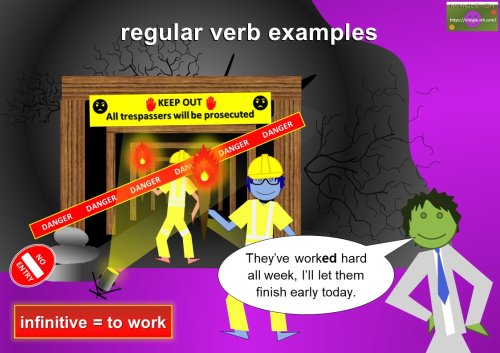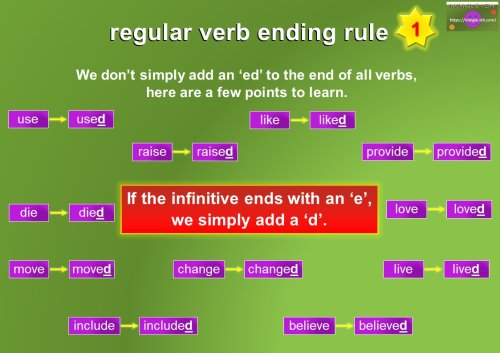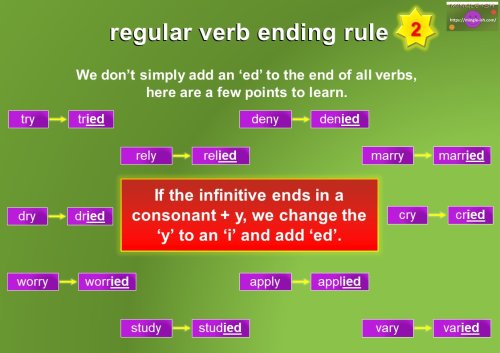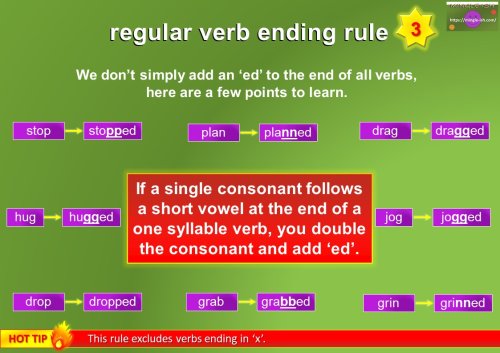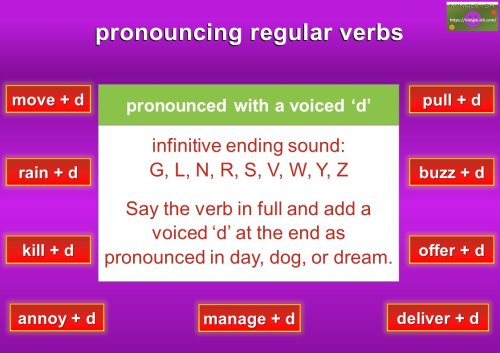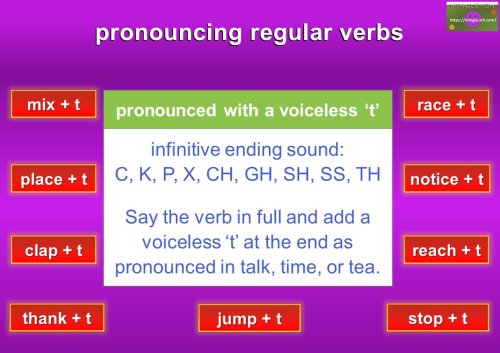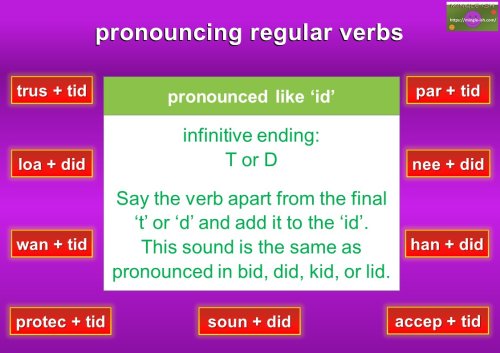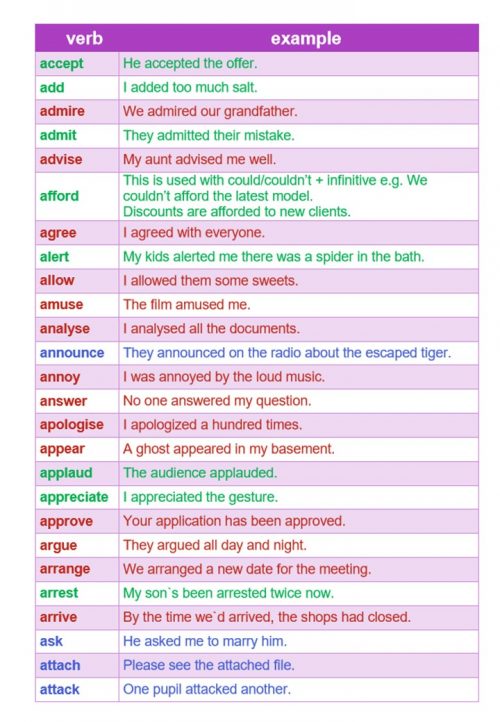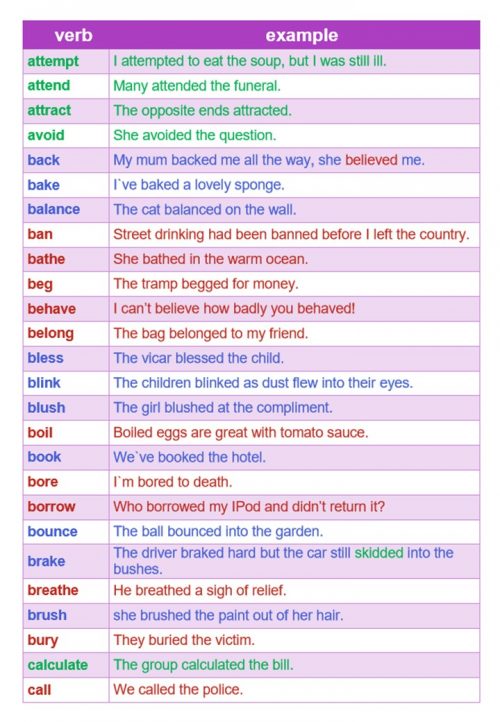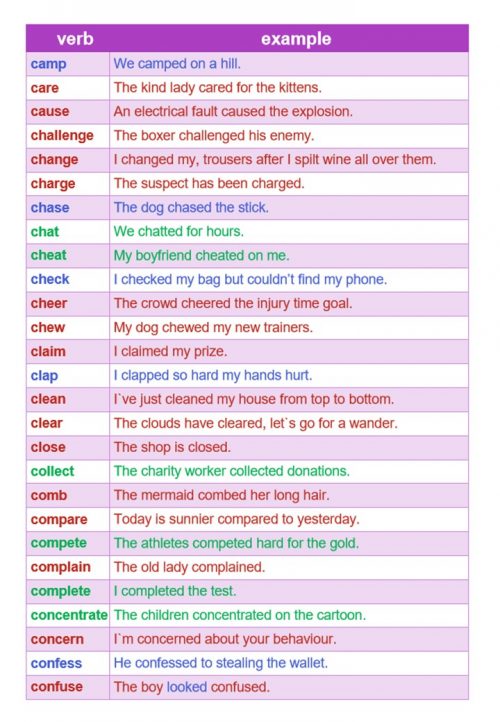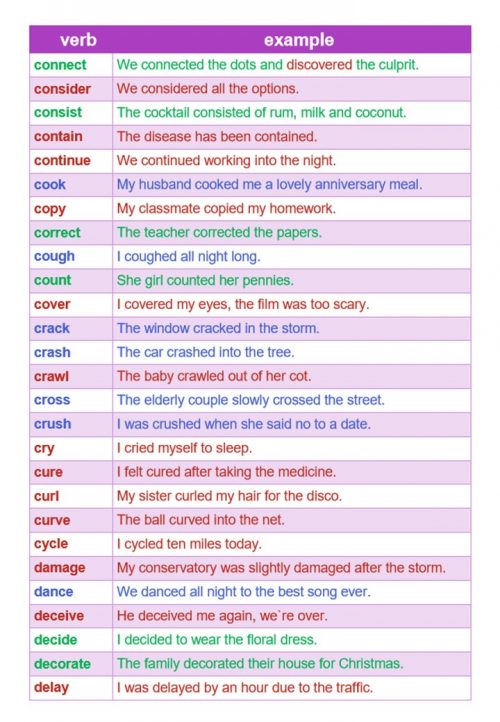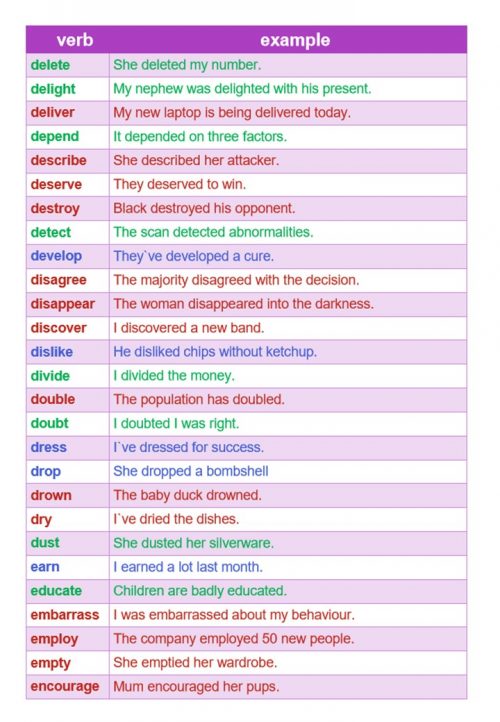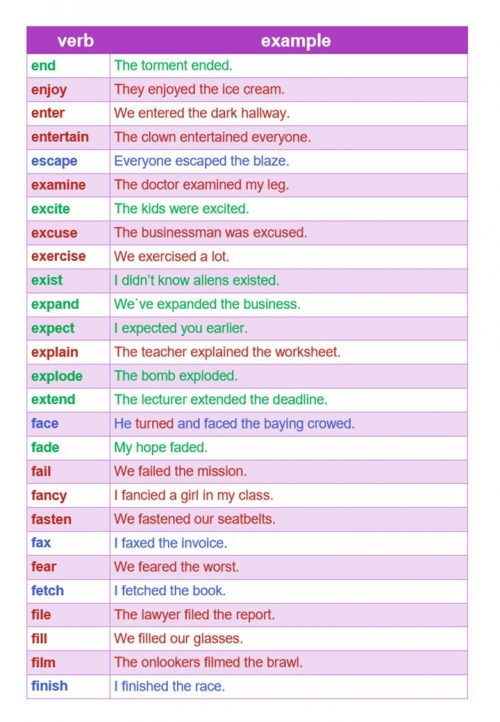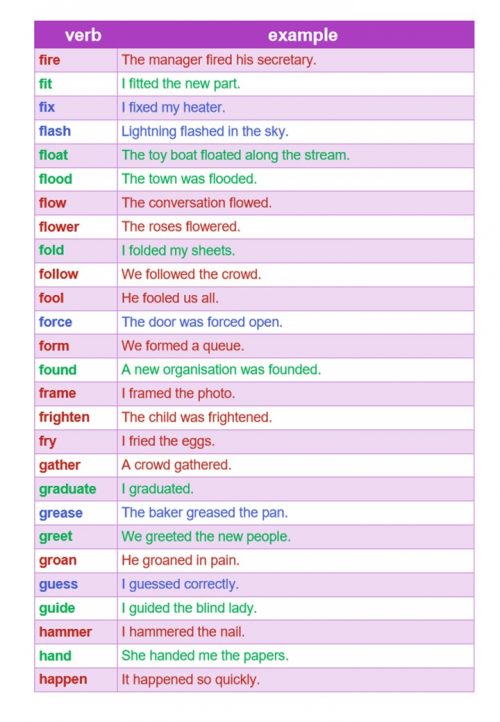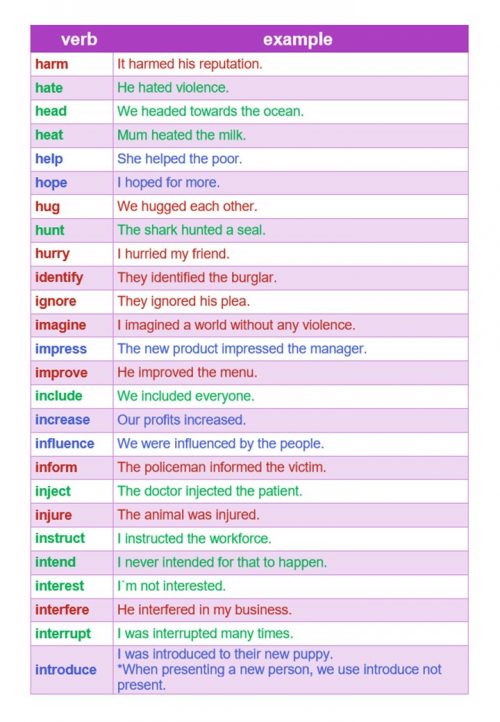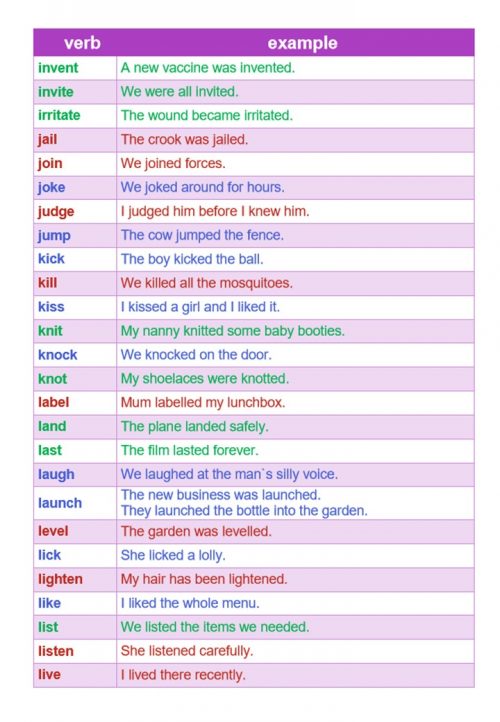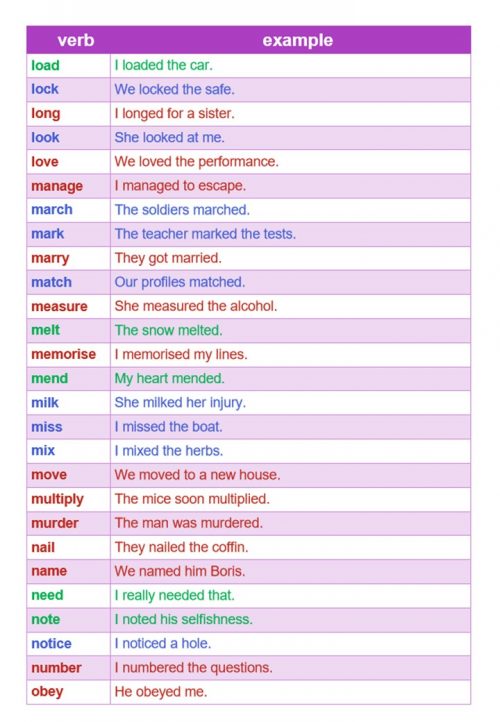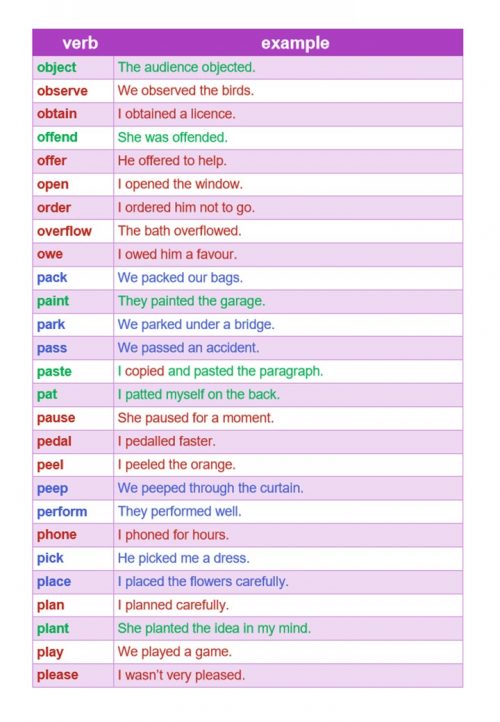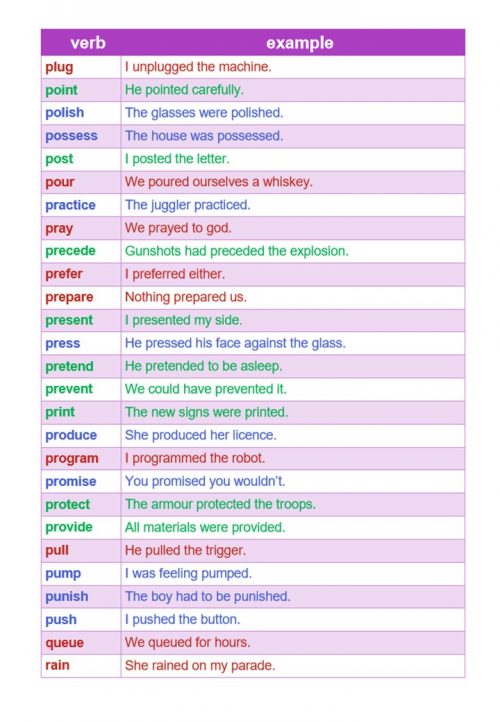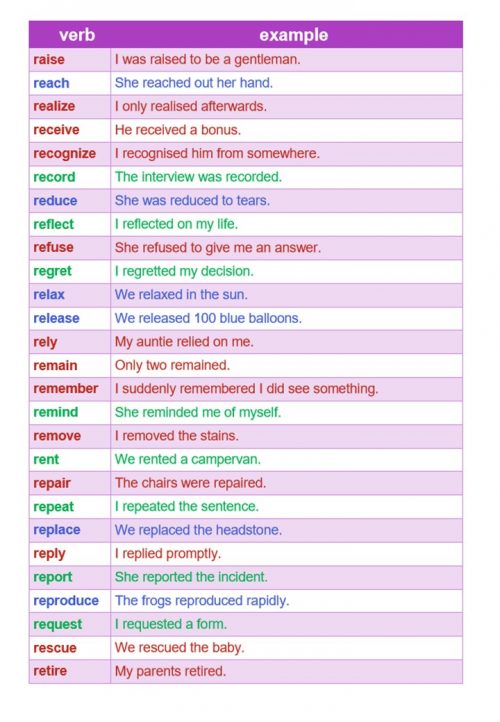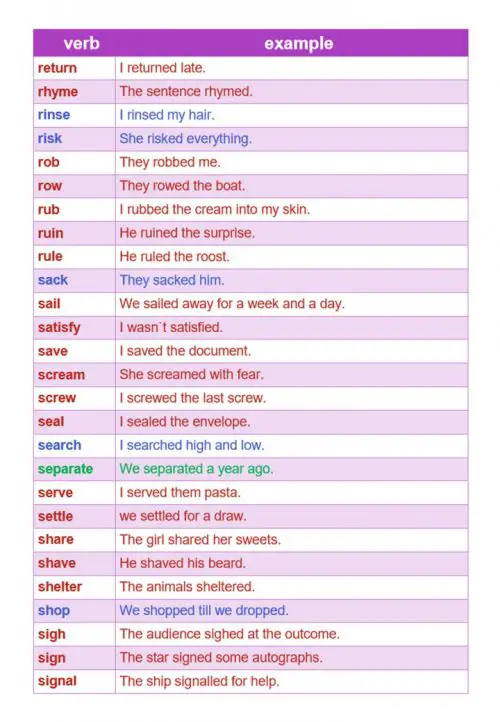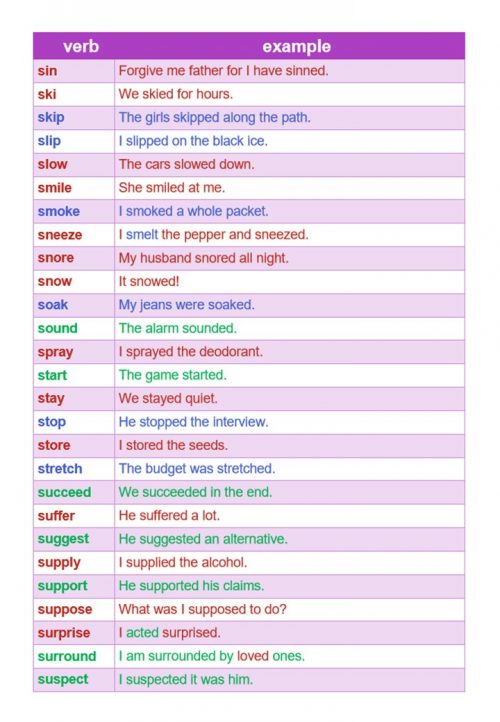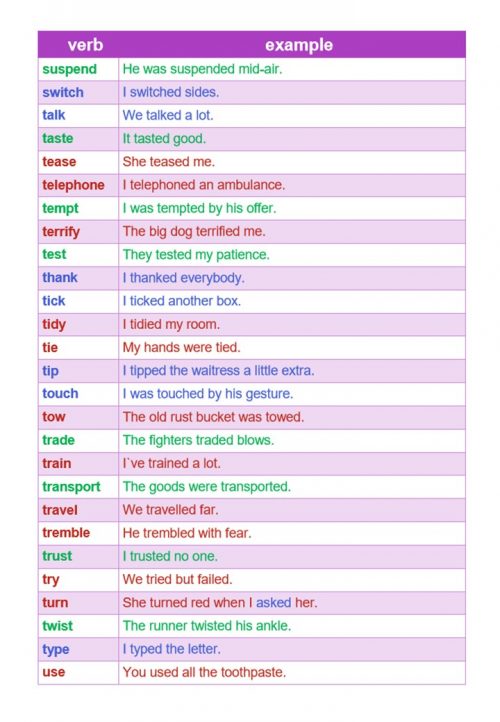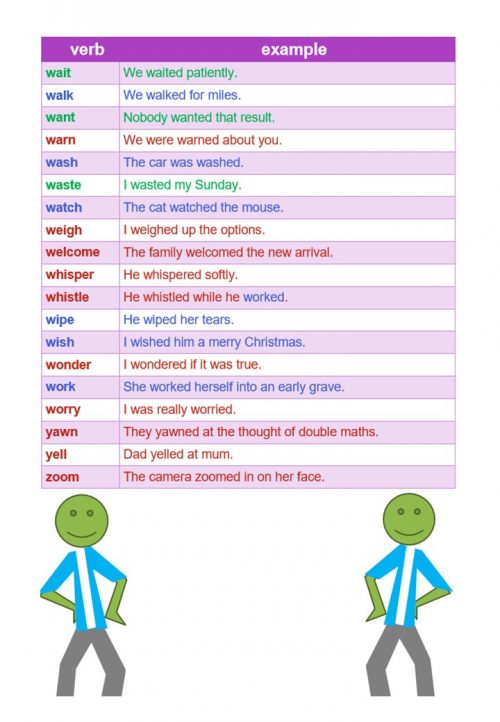Regular verbs are action words that all follow the same pattern for the past simple and the past participle tenses. Regular verbs are the easy ones for you to learn. They are so easy because they have a rule that actually works for all regular verbs. This rule tells us the ending of the verb.
We already know that before a verb is modified, it looks like this: to + infinitive
The rule for regular verbs is to add an ‘ed’ on to the end of the infinitive. This rule applies to the past tense and the participle (second and third columns). The only tricky part is pronouncing the ‘ed’, but we’ll get onto that later.
Let’s take a look at a few examples.
- infinitive – allow
past simple – allowed
past participle – allowed - infinitive – call
past simple – called
past participle – called - infinitive – guide
past simple – guided
past participle – guided - infinitive – help
past simple – helped
past participle – helped - infinitive – pause
past simple – paused
past participle – paused - infinitive – play
past simple – played
past participle – played - infinitive – remind
past simple – reminded
past participle – reminded - infinitive – try
past simple – tried
past participle – tried
regular verb examples in use
Let’s take a look at some examples of regular verbs in action. I’ve included the infinitive and a picture example in the past simple or past participle.
regular past tense verb ending rules
I know what you’re thinking, this seems too good to be true? Well, you’re right (kind of)! Take a look at my tips for spelling regular verbs in the past simple and the past participle.
Once you’ve learnt these three regular past tense verbs ending rules, you’ve cracked regular verbs.
We’ll start with an easy one…If the infinitive ends with an ‘e’, we simply add a ‘d’.
Let’s look at some examples.
- bake + d = baked
- close + d = closed
- guide + d = guided
- raise + d = raised
- save + d = saved
- type + d = typed
- waste + d = wasted
Rule number 2… If the infinitive ends in a consonant + y, we change the ‘y’ to an ‘i’ and add ‘ed’.
HOT TIP – A consonant is ANY letter of the alphabet that isn’t a, e, i, o, or u.
Let’s see some examples.
- bury becomes buried
- copy becomes copied
- hurry becomes hurried
- rely becomes relied
- try becomes tried
Finally it’s rule number 3 (the trickier one)… If a single consonant follows a short vowel at the end of a one syllable verb, you double the consonant and add ‘ed’.
HOT TIP – Vowels have long and short sounds, they can be difficult for English learners to grasp. Luckily for you, I have an article that can help, click here to find out more.
Let’s take a look at some examples.
- grab becomes grabbed (‘grab’ is one syllable and the ‘a’ is a short vowel sound)
- plan becomes planned (‘plan’ is one syllable and the ‘a’ is a short vowel sound)
- stop becomes stopped (‘stop’ is one syllable and the ‘o’ is a short vowel sound)
pronouncing ‘ed’ of past tense regular verbs
I may have told a little white lie, you haven’t quite cracked regular verbs yet. There is one more thing you have to learn…
You know how to spell these verbs, but do you know how to pronounce them? A lot of my students find pronouncing these very difficult. This is because the ‘ed’ is not pronounced like the ‘ed’ in ‘Edward’ as one would think. The good news is there is a fool proof formula for working out the pronunciation.
So, there are three ways of pronouncing the ‘ed’ for past tense regular verbs, participles and adjectives. I’ve illustrated them below. You should learn voiced and voiceless sounds to help you differentiate between the endings.
You can test this rule by choosing a verb, find the ending, and practice pronouncing it.
First up we have the voiced ‘d’ which is pronounced deep in your throat using your vocal cords. To pronounce these verbs correctly, simply say the verb in full and add a voiced ‘d’ at the end as in day, dog, or dream.
Any regular verb ending in these sounds G, L, N, R, S, V, W, Y, Z follow this rule.
Next we have the voiceless ‘t’ which is pronounced using your mouth and tongue. To pronounce these verbs correctly, simply say the verb in full and add a voiceless ‘t’ at the end as in talk, time, or tea.
Any regular verb ending in these sounds C, K, P, X, CH, GH, SH, SS, TH follow this rule.
Finally, we have the ‘id’ ending. To pronounce these verbs correctly, say the verb apart from the final ‘t’ or ‘d’ and add it to the ‘id’. This sound is the same as pronounced in bid, did, kid, or lid.
This rule works for all verbs ending in ‘t’ or ‘d’.
regular verb list with pronunciation instructions
Wouldn’t it be good if someone made a list of all the regular verbs and colour-coded it so you know how to pronounce the ending?
Your wish is my command.
Here is a colour-coded list which corresponds to the above pictures with examples. Go ahead and practice pronouncing them.
Watch this video if you’d like to hear what pronouncing the different ‘ed’ endings sound like.
